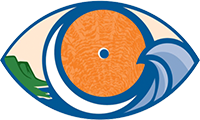About Us
Resources
Word Lists
Guam Place Names
CHamoru Archives
Genealogy Research Lab and Resources
Community Services
What's Happening?
Contact Us
Our Philosophy
Board Members Emplehao Siha
Employees I Seyon-Måmi
Our Logo Måpan Otganisasión
Organizational Chart Åkton Irensian CHamoru 2016
CHamoru Heritage Act 2016
Partnerships
Official Documents
Products
Projects
Symbols of Nationhood
Word Search App LISTAN ESPESIǺT
Specialized Lists DIKSIONÅRIU SIHA
Dictionaries
Scope of Authority MÅPAN ÅNTES SIHA
Historical Maps NÅ'AN I SENGSONG YAN OTRO LUGǺT SIHA
Village Names and Other Places with Traditional CHamoru Names NÅ'AN FINA'TÅNO' YAN MÅTAN HÅNOM
Geological Features FANHA'ANIYAN NÅ'AN LUGǺT
Calendar
Writings about the CHamoru Language TINIGE’ GI FINO’ CHAMORU
Writings in the CHamoru Language TINIGE’ PUT I MANAOTAO TÅNO’
Writings about CHamoru Culture and History FINATTA SIHA PUT CHAMORU
Multimedia Collections
Translations
Training on Guam CHamoru Orthography
Seal of Affirmation
Lifetime Achievement Awards
Board Meetings PARA PÅ'GO MO'NA
Current Events
Past Events
Contact Us
Hagåtña Restoration and Redevelopment Authority (HRRA) Bernice P. Bishop Museum
Dibisión Inestudion CHamoru yan Espesiǻt na Prugråma Siha
CHamoru Studies and Special Projects Division, Department of Education Dinanña’ Mamfáfa’na’gue
CHamoru Medium Education Consortium Dipåttamenton Kåohao Guinahan CHamoru yan i Inangokkon Inadahen Guåhan
Department of CHamoru Affairs and Guam Museum Eskuelan Maga’låhen Hurao
Maga’låhen Hurao CHamoru Academy Charter School GIHA
Guam Indigenous Heritage Alliance Håle’ Taotao Håya
CHamoru Roots Ináfa’maolek Ginen i Sengsong
Guam Mayors Council Inayudan i Manhoben
Summer Program Interns Kulehon Kumunidǻt Guåhan
Guam Community College Setbisión Bisitan Guåhan
Guam Visitors Bureau Umeyak CHamoru
LearingCHamoru.com Unibetsidǻt Guåhan
University of Guam US Geological Survey
Guam Hydrologic Survey
Public Laws
Executive Orders
Executive Proclamations
Legislative Resolutions
Publications
Learning Tools
Exhibits and Multimedia Collections
Annual Reports
Orthography Course
Word of the Day LINAKNGOS LINAKSE'
CHamoru Expert Interview Series NINA'FITMEN INEYAK CHAMORU
Teaching CHamoru Certification Program
Prayers and Songs
CHamoru Fluency and Proficiency Assessment Tools “Ti Atrasåsao” Kinalamten i Fino’-ta
“It’s Not Too Late” Revitalization Campaign
The Quest for Self-Determination CHAMORU KADA HA’ÅNI
CHamoru Everyday Interview Series HINENGGEN CHAMORU
Cultural Vignettes PUT I HISTORIAN CHAMORU
CHamoru Revisionist Historiography
CHamoru Cultural Dictionary Series BIÅHEN KIKO GI I ENGKANTǺO NA GIGIPU NA SÅKMAN
Kiko’s Adventure on the Magic Flying Proa I KÅNTAN HA’ÅNEN MANNÅ’I GRÅSIA
The Thanksgiving Day Song I MALINGU NA PÅTGON
The Lost Child Ineyak I Fino’ CHamoru Para Famagu’on
Children’s CHamoru Pictionary Series Tinanumi
The Story of Tinanumi Tiniroron Neni
CHamoru Nursery Rhyme Book Utugrafihan CHamoru, Guåhan
Guåhan CHamoru Orthography
“Ti Atrasåsao” Kinalamten i Fino’-ta
“It’s Not Too Late” Revitalization Campaign
The Rationale for Revitalization
In the 1990 Census, the number of CHamoru speakers on Guam was 34,598. This number has steadily declined since. Between 1990 and 2000 there was a loss of 3,890 speakers. Between 2000 and 2010 the loss was 4,881 speakers and between 2010 and 2020 the census recorded a loss of 4,437 speakers. As of 2020 we have 21,390 speakers most of whom are over the age of 65. If this trend continues, by 2060 CHamoru will no longer be spoken.
There is growing awareness in our community about the dire need to produce young speakers and dramatically increase the practice of speaking intergenerationally if we want to reverse this downward trend toward extinction. The emergence of immersion programs, such as Fineyakan Sinipok and the Chief Hurao Academy Charter School are a clear indication that concerted efforts are being made to address this crisis. The Kumisión is dedicated to supporting CHamoru language revitalization in all its projects and programs.
The Kumisión commissioned Dr. Kenneth Gofigan Kuper to conduct a CHamoru Revitalization Study. Entitled, Giha Mas Mona: Planning for the Future of Fino’ CHamoru in Guåhan, the report reviews efforts to date and offers recommendations for future action.
Interviews with Second Language Speakers
The Kumisión has launched a campaign to encourage passive speakers and future learners that it is never too late! A series of products and activities are planned as part of this effort entitled, “Ti Atrasåsao,” which is an urgent call out to those who want to speak CHamoru but have not because they feel intimidated, get embarrassed when making mistakes, and do not have speaking parents who can create a safe and viable language learning nest.
Personal testimonies are a powerful source of inspiration for doing something that seems impossible. So, we launched this phase of the campaign with a series of video interviews featuring second language learners of Fino’ CHamoru. Eleven members of our community share their language journeys and best practices for overcoming the obstacles they have encountered. Their interviews are provided below and are also available on our YouTube Channel.
Indigenous Language Symposium, Dinanña put i Fino’ Taotao Tåno’
A two-day Summit was held at the Leo Palace Resort on February 10 and 11, 2023. The theme of the event was “Ti Atrasåsao” – “It’s Never Too Late!”
The Indigenous Language Summit was co-sponsored by the Kumisión i Fino’ CHamoru, University of Guam, Young Men’s League of Guam, and the Pacific Indigenous Women’s Network. The Kumisión portion of the sponsorship was paid for by The Office of the Governor through the Educational Stabilization Fund (ESF), Grant Number S425H21004.
Attendees included CHamoru teachers, CHamoru language champions and students from Guam and CNMI, and indigenous language advocates from the Pacific region including Hawaii, Aotearoa, American Samoa and our neighbors in Micronesia. Island leaders from across the Pacific presented as keynoters and panel participants.
Ti Atrasåsao Book
Additionally, a collection of written testimonies, poems, and artwork will be published in a book entitled, Ti Atrasåsao: It’s Not Too Late! as part of this campaign.
